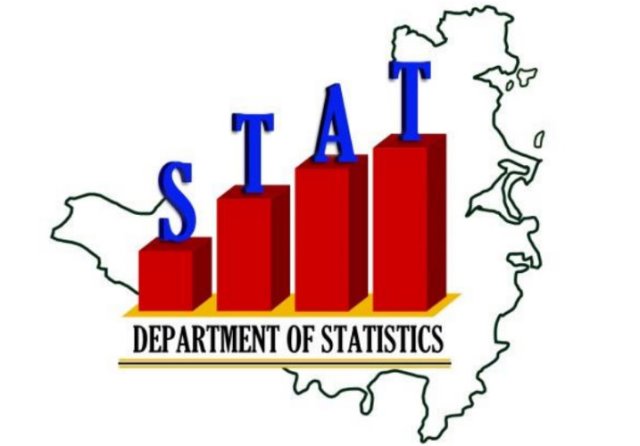Philipsburg, Sint Maarten – The Consumer Price Index (CPI) decrease slightly in the second quarter of 2023 to 108.69, which represented a decrease of 0.60% when compared to the previous quarter. A comparison of consumer prices within the past year (quarter two of 2022 to quarter two of 2023) resulted in an increase of 0.05%.
A Comparison of 2023 Q2 with 2023 Q1 revealed the highest Increases were in restaurants and hotels.
In the second quarter of 2023, prices rose in 7 of the 12 expenditure categories when compared to the first quarter of 2023. Increases were seen in the categories of Restaurants and hotels (+3.92%), alcoholic beverages, tobacco, and narcotics (+2.88%), Housing, water, electricity, gas and other fuels (+0.79%), Clothing and footwear (+0.59%), Communication (+0.51%), Recreation and culture (+0.42%), Health (+0.07%). Decreases are seen in the categories of Transport (-5.32%), Miscellaneous goods and services (-1.52%), Food and non-alcoholic beverages (-0.65%), Furnishings, household equipment and routine household maintenance (-0.28%); however, education remained the same.
Based on the latest Household Budget Survey, the following four categories had the largest percentage weight (influence) of the total CPI: housing, water, electricity, gas, and other fuels (36.1%), transport (14.6%), miscellaneous goods and services (13.4%) and food and non-alcoholic beverages (7.2%).
- The change in the price of housing, water, electricity, gas, and other fuels was influenced by an increase in the price level of the following subgroups electricity, gas, and other fuels increased by +5.45%, with a further increase of +7.64% in the subcategory electricity and a slight increase of +1.12% in solid fuels, however a decrease of 7.02% in cooking gas. The price of Maintenance and repair of the dwelling also showed an increase of +0.19%, with a +0.25% increase in subcategory Materials for the maintenance and repair of the dwelling. Decreases in housing were observed for actual rentals for housing -0.03%, which was driven by actual rentals paid by tenants.
- The prices of the category transport were impacted by the subgroups Operation of personal transport equipment (-11.12%) – driven by spare parts and accessories for personal transport equipment (+1.66%) and fuels and lubricants for personal transport equipment (-17.75%). Purchase of vehicles (0.01%) driven by bicycles (+2.27%). Transport services (-3.15%) driven by Passenger transport by sea and inland waterway (+7.46%) and Passenger transport by sea and inland waterway (-5.42%).
- The prices in the category miscellaneous goods and services decrease due to the weighted decreases in Personal care which was driven by Electric appliances for personal care (-2.08%), Other appliances, articles, and products for personal care (-0.24%). Personal effects n.e.c. which was driven by Jewelry, clocks, and watches (-6.01%) and Other personal effects (-1.22%). Financial services n.e.c. is driven by Other financial services n.e.c. (-9.56%). However, there was an increase in Insurance which was driven by Insurance connected with the dwelling (14.55%), Insurance connected with health (8.42%), and Life insurance (3.72%).
- For food and non-alcoholic beverages, the subcategory food decreased by 1.08% and there was an increase in non-alcoholic beverages by 1.93%. The price indices of the subcategory food was influenced by the higher prices of Oils and fats (5.96%), Food products n.e.c. (2.32%), Sugar, jam, honey, chocolate, and confectionery (1.63%), Bread and cereals (1.10%). Decreases were observed in Milk, cheese and eggs (-9.08%), Meat (-1.25%), Fruit (-0.64%), Vegetables (-0.59%), and Fish and seafood (-0.28%). The subcategory Non-alcoholic beverages increases by Mineral waters, soft drinks, fruit, and vegetable juices (+1.94%) and coffee, tea, cocoa (+1.88%).
Decreasing costs in three of the four major categories, in addition to a decrease in one of the remaining categories, caused the overall CPI to display a decrease from the first to the second quarter of 2023.
Inflation – comparison of 2022 Q2 with 2023 Q2 saw the highest increase in Clothing and footwear.
The prices of the second quarter of 2023 increased when compared to those in the second quarter of 2022, with the inflation rate recorded at +0.05%. This rise in prices compared to the previous 12 months was due to an increase in costs within the household expenditure categories Clothing and footwear (+6.67%), Restaurants and hotels (+5.30%), Furnishings, household equipment and routine household maintenance (+5.29%), Food and non-alcoholic beverages (+4.88%), Alcoholic beverages, tobacco and narcotics (+3.69%), Recreation and culture (+3.07%), Education (+2.95%), Health (+1.29%), Housing, water, electricity, gas and other fuels (+1.13%), Communication (+0.66%), Miscellaneous goods and services (+0.04%); the only decrease was in Transport (-11.08%). However, the Transportation category carries the largest weight of the group and therefore influences the overall results.
The prices in three of the four expenditure categories with the largest influence on the total CPI increased when compared to the same period in 2022.
- Housing, water, electricity, gas, and other fuels rose by +1.13%, driven by actual rentals for housing (+7.87%), maintenance and repair of the dwelling (+7.42%), water supply and miscellaneous services relating to the dwelling (+0.25%), and electricity, gas and other fuels (-11.34%).
- As mentioned previously, transport decreased by 11.08%; this was due to the decrease in operation of personal transport equipment including fuel (-27.39%) and rise in purchase of vehicles (+2.86%), and transport services (+1.23%) in the second quarter of 2023 when compared to the same period of the previous year.
- Miscellaneous goods and services increased 0.04%, driven by personal effects n.e.c. (+5.54%), insurance (+4.50%), personal care (+1.70%), social protection (+1.20%), financial services n.e.c. (-10.11%).
- In addition, prices of food and non-alcoholic beverages increased by +4.88%, influenced by non-alcoholic beverages (+8.74%) and food (+4.24%).






























